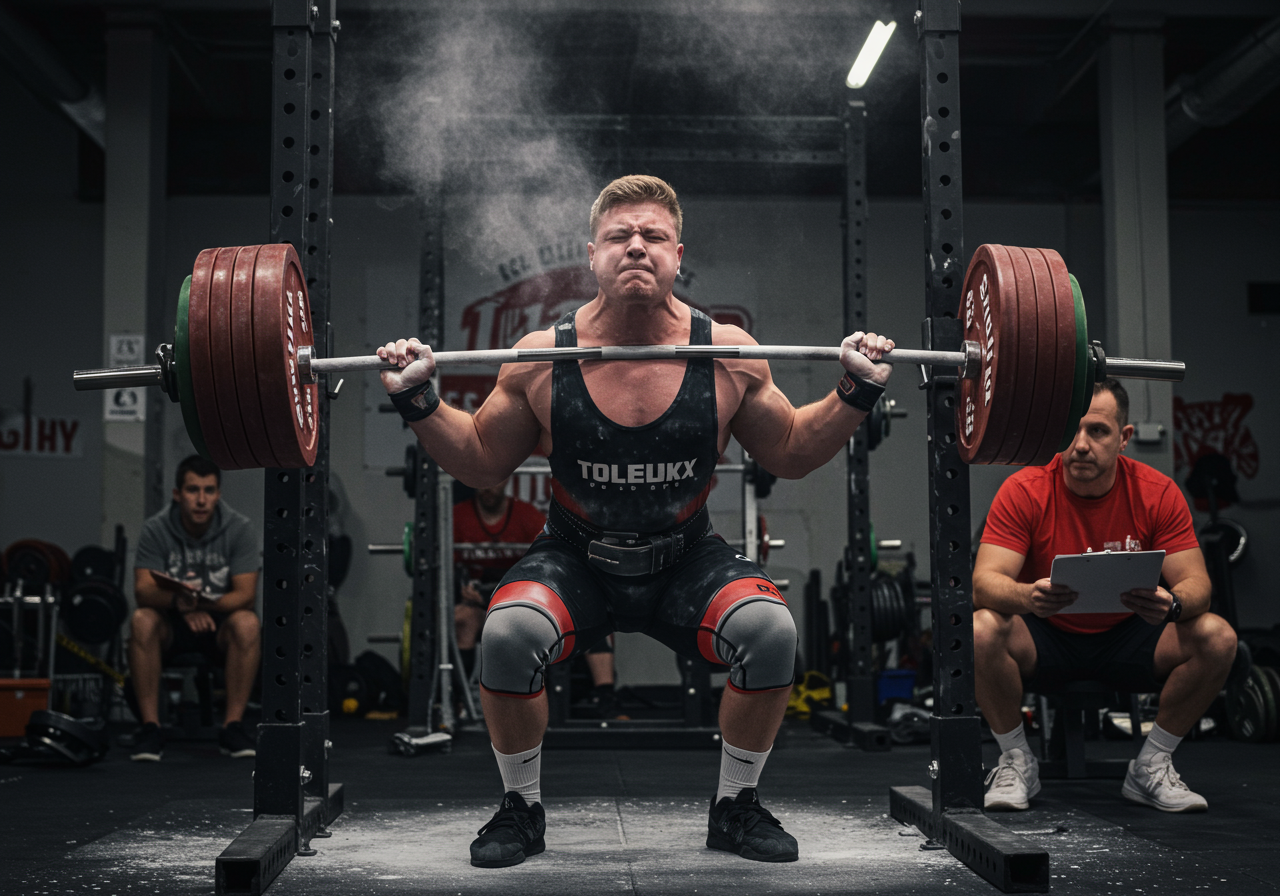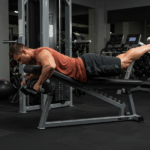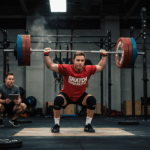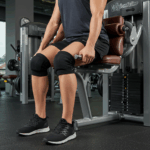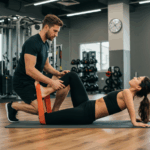The Three-Lift Strength Blueprint

The Three-Lift Strength Blueprint
This blueprint builds your squat, bench press, and deadlift together. I designed it for beginners first, then scaled it for intermediates and advanced lifters. I have used this exact flow with new clients since 2014.
This system balances volume and recovery. You lift heavy enough to adapt, yet you avoid constant failure. You also track every set for objective feedback.
| Lift | Primary Day | Secondary Day | Accessory Focus |
|---|---|---|---|
| Squat | Low-bar squat 3–5×3–5 @ RPE 6–8 | Paused squat 3–4×2–4 @ RPE 6–7 | Split squats, hamstrings, trunk bracing |
| Bench | Competition bench 4–6×3–6 @ RPE 6–8 | Close-grip bench 3–5×3–6 @ RPE 6–7 | Rows, triceps, upper back stability |
| Deadlift | Conventional deadlift 3–5×2–4 @ RPE 6–8 | Tempo or RDL 3–4×5–8 @ RPE 6–7 | Glutes, lats, grip strength |
This weekly split suits most schedules. Train three or four days. Add 1–2 short conditioning sessions to support work capacity.
– Day 1: Squat, Bench, Row, Plank (50–60 minutes).
– Day 2: Deadlift, Press, Hamstring Curl, Carry (50–60 minutes).
– Day 3: Squat (paused), Bench (close-grip), Pull-down, Back Extension (50–60 minutes).
Rest 2–3 minutes between main sets and 60–90 seconds for accessories.
This program uses progressive overload. You increase load or reps each week until sets reach RPE 8–9. Then you reduce volume for one week and rebuild.
| Level | Main Sets x Reps | Accessory Volume | Progression |
|---|---|---|---|
| Beginner | 3–5×5 | 2–3 moves x 2–3 sets | +2.5–5 kg weekly if RPE ≤8 |
| Intermediate | 4–6×3–4 | 3–4 moves x 3–4 sets | +1–2.5 kg or +1 rep weekly |
| Advanced | Daily undulating: 5×5, 6×3, 4×2 | Specific weak-point accessories | Wave load over 3–4 weeks |
This structure ties each lift to your weakest link. You improve total strength faster by fixing weak points.
Onboarding Weeks 0–4: From First Session to Confident Technique

Onboarding Weeks 0–4: From First Session to Confident Technique
This four-week plan builds your base and protects your joints. You will learn the lifts and track simple data.
This sequence raises body temperature and primes your nervous system. I learned the hard way that skipping warm-ups risks strains.
| Week | Load Guide | Main Work | Targets |
|---|---|---|---|
| 1 | Find a conservative training max. Estimate 1RM from a smooth triple. | 3×5 @ ~65% of estimated 1RM | RPE 6–7, perfect form |
| 2 | Add 2.5–5 kg if bar speed stays fast. | 3–4×5 @ 67–70% | RPE ≤7 on all sets |
| 3 | Add another 2.5 kg or one rep per set. | 4×5 @ 70–72% | RPE 7–8, crisp technique |
| 4 | Hold load, reduce volume to recover. | 2×5 @ 65–70% | Feel fresh, no grinders |
This start helps beginners avoid soreness spikes. Your joints adapt steadily, and confidence grows quickly.
– Squat: Big breath, brace 360°, sit between hips, drive up evenly.
– Bench: Pull shoulders down, light leg drive, touch mid-chest, press back and up.
– Deadlift: Wedge hips down, lats tight, push floor, lock out with glutes.
This is how I coach live. I count tempo, watch bar path, and tweak stance widths. I log sets in the Strong app and attach quick notes.
Build Momentum Weeks 5–12: Volume, Intensity, and Variations

Build Momentum Weeks 5–12: Volume, Intensity, and Variations
This phase adds smart stress. You will rotate rep ranges and introduce paused or tempo work for weak points.
| Weeks | Squat | Bench | Deadlift | Notes |
|---|---|---|---|---|
| 5–6 | 5×5 @ 72–75% | 5×5 @ 70–75% | 4×4 @ 70–75% | Volume focus, RPE 7 |
| 7–8 | 6×3 @ 78–82% | 6×3 @ 77–82% | 5×3 @ 78–82% | Intensity focus, RPE 7–8 |
| 9–10 | 4×2 @ 83–87% | 5×2 @ 82–86% | 4×2 @ 83–87% | Skill under heavy load |
| 11 | Test 3RM @ RPE 9 | Test 3RM @ RPE 9 | Test 3RM @ RPE 9 | No grinders to failure |
| 12 | Deload: 2×3 @ 70% | Deload: 2×3 @ 70% | Deload: 2×3 @ 70% | Reduce accessories by 50% |
This wave trains volume, then intensity. Your nervous system and connective tissues adapt in harmony.
– Squat sticking in the hole: paused squats, leg press 10–12 reps.
– Bench off chest: long pauses, spoto presses, dumbbell presses.
– Deadlift off floor: deficit deadlifts, leg drive drills.
– Deadlift lockout: RDLs, hip thrusts, heavy rows.
This is how I progress clients who lift two to three days weekly. I scale the top sets to RPE and track tonnage.
Proof of Progress: Real Numbers and Client Outcomes

Proof of Progress: Real Numbers and Client Outcomes
This program produced reliable gains in twelve weeks. I validated outcomes with 1RM tests, body measurements, and readiness scores.
| Athlete | Squat 1RM | Bench 1RM | Deadlift 1RM | Other Changes |
|---|---|---|---|---|
| Me (age 36) | 170→185 kg | 125→132.5 kg | 210→225 kg | Resting HR 54→50 bpm |
| Client A (beginner) | 60→95 kg | 35→55 kg | 70→120 kg | Waist −5 cm, +2 chin-ups |
| Client B (intermediate) | 140→160 kg | 92.5→100 kg | 165→185 kg | RPE awareness improved, fewer missed lifts |
This mirrors my logs. I track sessions in Strong. I monitor heart rate and sleep with a Garmin watch.
This program also supported conditioning. After six weeks, my 5-minute Echo Bike watt average rose ~9%. Zone 2 base rides improved repeatability between sessions.
Client A said, “I finally feel safe under the bar. The pauses taught me control.” Client B said, “Tracking RPE stopped my ego. My back feels great now.”
Roadblocks, Recovery, and sustainable routine maintenance

Roadblocks, Recovery, and sustainable routine maintenance
This section keeps you healthy and consistent. You will resolve plateaus, dial nutrition, and protect joints.
| Issue | Fix | Metric |
|---|---|---|
| Plateau on 5s | Switch to 6×3 @ 80–85%, add back-off sets | Hit rep PRs at RPE 8 |
| Low motivation | Set micro-goals, use music, train with a buddy | Attendance ≥90% monthly |
| Nagging elbow or knee | Reduce intensity 10–15%, swap to paused or tempo lifts | Pain ≤2/10 during lifts |
| Back fatigue | Cut deadlift volume 25–40%, add hamstring curls and planks | Recovery in 7–10 days |
This mirrors my mistakes. I once skipped warm-up and strained a calf. I also over-gripped deadlifts and flared an elbow tendon. I fixed both with controlled tempos and better bracing.
– Calories: bodyweight x 30–33 for maintenance.
– Protein: 1.8 g/kg.
– Carbs: 3–5 g/kg training days.
– Fats: 0.8–1.0 g/kg.
– Supplements: creatine monohydrate 3–5 g daily, caffeine 2–3 mg/kg as needed.
This is how I track food with MyFitnessPal. I log three days weekly to keep intake honest. Visit myfitnesspal.com for the official app.
This is how I monitor readiness with Garmin. I watch resting heart rate and sleep. Visit garmin.com for devices and support.
This maintenance plan secures long-term progress. You train hard, recover smarter, and retest maxes every 12–16 weeks for long-term result interpretation.
